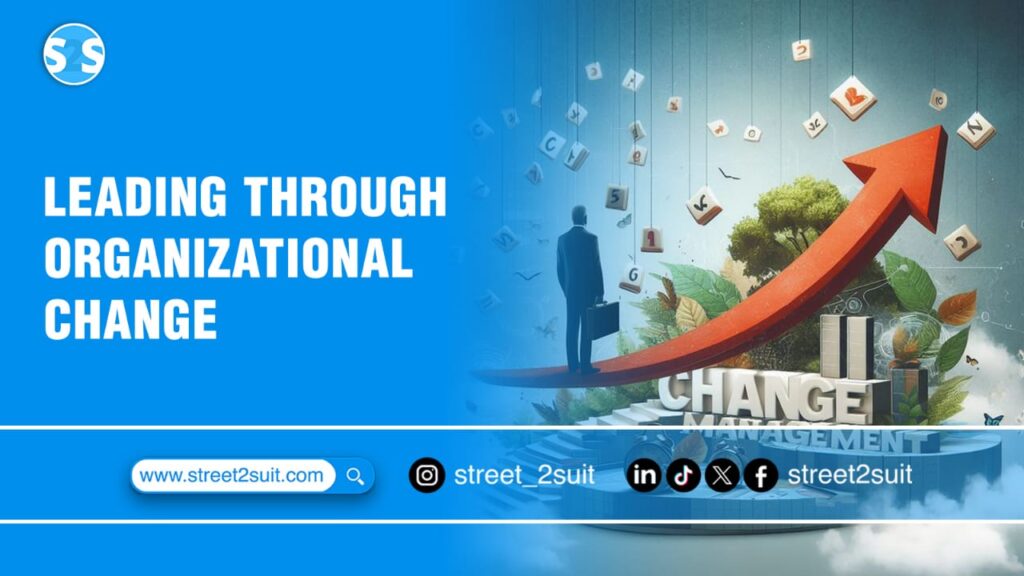Change is one of the few constants in business. Markets shift, technologies advance, customer preferences evolve, and organizations must adapt or risk becoming irrelevant. But while change is necessary for growth, it’s rarely comfortable. Research as shown that more than 60% of organizational change initiatives fail, not because of poor strategy, but because of challenges in leadership and people management.
The real question is not whether organizations must change, it’s how leaders can guide people through change effectively.
Why Change Is So Difficult
Before exploring leadership strategies, it’s worth understanding why change creates so much friction. Psychologists point to three common reasons:
- Loss of control. People resist when they feel change is happening to them instead of with them.
- Fear of the unknown. Uncertainty triggers anxiety; employees wonder, What does this mean for me?
- Comfort in routine. Established habits provide psychological safety. Change disrupts that stability.
For leaders, the challenge lies in addressing these human concerns while keeping the organization focused on long-term goals.
1. Start with Vision, Not Directives
When organizations announce change, employees often hear only the “what” (new policies, new tools, new structures). But true leadership begins with the why.
Simon Sinek’s Golden Circle theory emphasizes that people are motivated by purpose more than instruction. A leader who says, “We’re restructuring to cut costs,” fuels anxiety. A leader who says, “We’re restructuring so we can invest more in innovation and secure our future in the market,” builds understanding and alignment.
Tip:
Paint a picture of what success will look like after the change. Instead of only sharing data or cost savings, describe how the change will create new opportunities for growth, collaboration, or impact.
2. Communicate Early, Honestly, and Often
One of the fastest ways to erode trust during change is to go silent. Employees will fill the gap with speculation, and rumors spread faster than official memos.
Leaders must adopt a transparent communication strategy:
- Share what you know, even if you don’t have all the answers.
- Acknowledge challenges openly; sugarcoating erodes credibility.
- Create two-way channels for feedback like town halls, surveys, or one-on-one check-ins.
Research from Gartner shows that organizations with open communication during transformation efforts are 3.5 times more likely to outperform peers. Silence breeds resistance; dialogue builds trust.
3. Lead with Empathy
Change doesn’t impact everyone equally. For some, it may mean new responsibilities. For others, it may mean redundancy. Leaders who focus only on outcomes risk alienating their teams.
Empathy in leadership means:
- Listening actively to concerns.
- Recognizing emotions as valid, even when they differ from your own.
- Providing resources such as training, counseling, or mentorship to ease transitions.
Harvard Business Review has documented that leaders who show empathy foster higher levels of employee engagement, particularly during times of uncertainty.
4. Empower, Don’t Dictate
Change fails when employees feel powerless. Involving them in the process creates ownership. For example:
- Form cross-functional task forces to design implementation strategies.
- Encourage team members to suggest solutions instead of waiting for top-down directives.
- Give autonomy where possible small wins build momentum.
Kotter’s 8-Step Change Model stresses the importance of empowering employees by removing obstacles. When people feel like contributors instead of passive recipients, they become champions of change rather than resistors.
5. Provide Stability Amid Transition
Even as things shift, employees need anchors. Leaders can provide stability by:
- Maintaining some familiar routines or traditions to signal continuity.
- Clarifying roles early so employees don’t feel adrift.
- Reinforcing the organization’s core values, even if strategies evolve.
Think of it as balancing consistency with adaptability: employees need to know the ground isn’t shifting beneath their feet entirely.
6. Model the Change You Want to See
Employees watch leaders more than they listen to them. If leadership is resistant, dismissive, or inconsistent, teams will follow suit.
For example:
- If you expect agility, demonstrate it by adapting your own processes.
- If you’re asking for collaboration, show up visibly in collaborative forums.
- If mistakes are part of learning, admit your own missteps and frame them as growth opportunities.
As the saying goes: Culture eats strategy for breakfast. And culture is shaped by what leaders do, not just what they say.
7. Measure Progress and Celebrate Wins
Change can feel endless if milestones go unacknowledged. Leaders should track progress and share updates regularly. Recognizing achievements, even small ones fuels motivation.
Examples:
- Highlight a department that successfully adopted a new tool.
- Publicly thank individuals who went above and beyond.
- Celebrate short-term wins while keeping long-term goals in focus.
Kotter emphasizes that celebrating wins consolidates momentum. It reminds people that change is not just disruption, it’s progress.
8. Develop Change Resilience in Teams
Great leaders don’t just manage one change; they prepare organizations to handle future change more effectively. This requires building resilience.
Ways to do this:
- Provide continuous learning opportunities.
- Normalize adaptability as a professional skill.
- Encourage a mindset where change is seen as opportunity, not threat.
Conclusion
Leading through organizational change isn’t about having all the answers or controlling every outcome. It’s about being an anchor in the storm, providing clarity, empathy, and stability while guiding people toward a shared vision.
Change will always trigger resistance. But with the right leadership rooted in communication, empowerment, and authenticity, organizations can transform challenges into opportunities.
After all, the true test of leadership is not how well you guide when the waters are calm, but how steadily you steer when the tides turn.
Receive the latest job and career updates in your inbox, every week!



